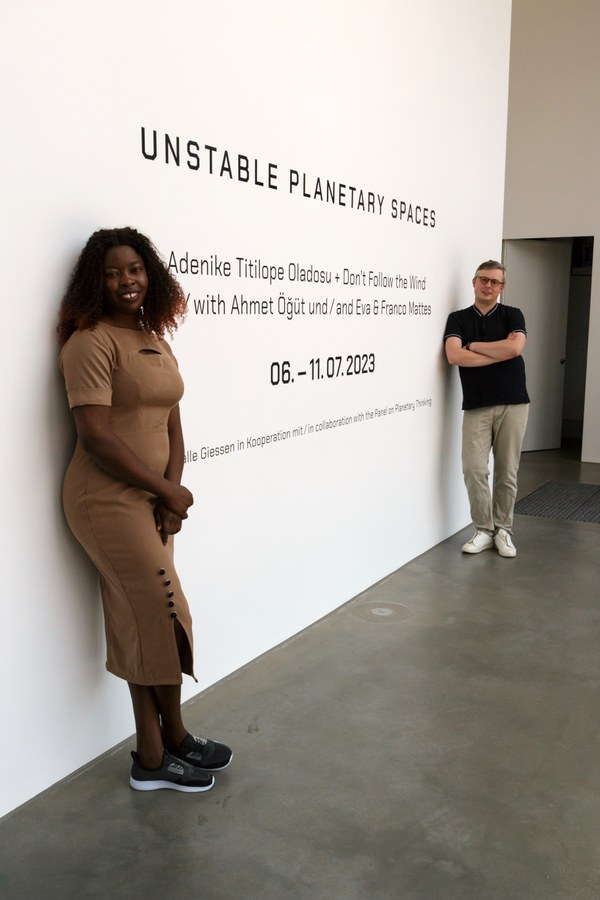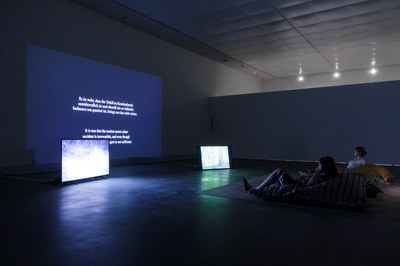Unstable Planetary Spaces
Event Report
- Unstable Planetary Spaces
-
From 6-11 July 2023, the exhibition “Unstable Planetary Spaces” at Kunsthalle Gießen, explored how artists and activists grapple with some of the most challenging long-term disasters of recent times: the shrinking of Lake Chad due to human induced climate change and the irradiated Fukushima exclusion zone after the 2011 nuclear disaster in Japan. The event showcased the works of the ‘Planetary Spaces’ summer fellows; Adenike Titilope Oladosu and Jason Waite at the Panel on Planetary Thinking along with the works of Eva & Franco Mattes (Don’t Follow the Wind) and Ahmet Ögüt.

© Aaron Endres The exhibition opened in the evening of 6 July, with an Artist’s Talk with Oladosu and Waite, moderated by Claus Leggewie (Director of the Panel on Planetary Thinking), Nadia Ismail (Director-Kunsthalle Gießen), and Liza B. Bauer (Interim Scientific Manager of the Panel on Planetary Thinking). On 7 July, Ms. Bauer provided a guided tour of the exhibition.
Activist and ecofeminist, Oladosu, through her poignant satellite image installations from years 2000, 2007, 2009, 2014, and 2021 and video montage showcased the massive shrinking of Lake Chad over the course of twenty years with the water level dropping drastically whilst the spread of vegetation, and the built-up area increasing exponentially. Through her installation, she urged the audience to take notice of this dire environmental catastrophe that has severe political, economic, social consequences with 30 million livelihoods already at stake.
Curator and writer, Waite showcased a three-channel video and audio installation featuring more-than-human denizens of the Fukushima exclusion zone along with conversation snippets of the former human denizens who wish to return to their former dwellings, as part of the Japanese government’s plan to reclaim the area with human habitation. The installation is part of an ongoing exhibition from the collective Don’t Follow the Wind, since 2015 of which Waite is a curator. The exhibition showed video footage collected from wildlife cameras installed at the exclusion zone that captured raccoon dogs, wild boars, monkeys, mice and many more that have already reclaimed the area. Waite emphasized on the need to imagine more-than-human infrastructure for peaceful co-habitation once the human denizens return to the zone.
In addition, the exhibition showcased the work of Eva & Franco Mattes, a carpet printed with the structure of a contaminated floor and another video installation with Ahmet Ögüt testing his self-designed samurai radiation protection suit in a lake in the zone almost as a prelude to the life in the future for human denizens.
As Leggewie succinctly put it, the exhibition was a truly transdisciplinary experience where “art vividly and pointedly represented the planetary phenomena” through “human and more-than-human connections as basis for research”






